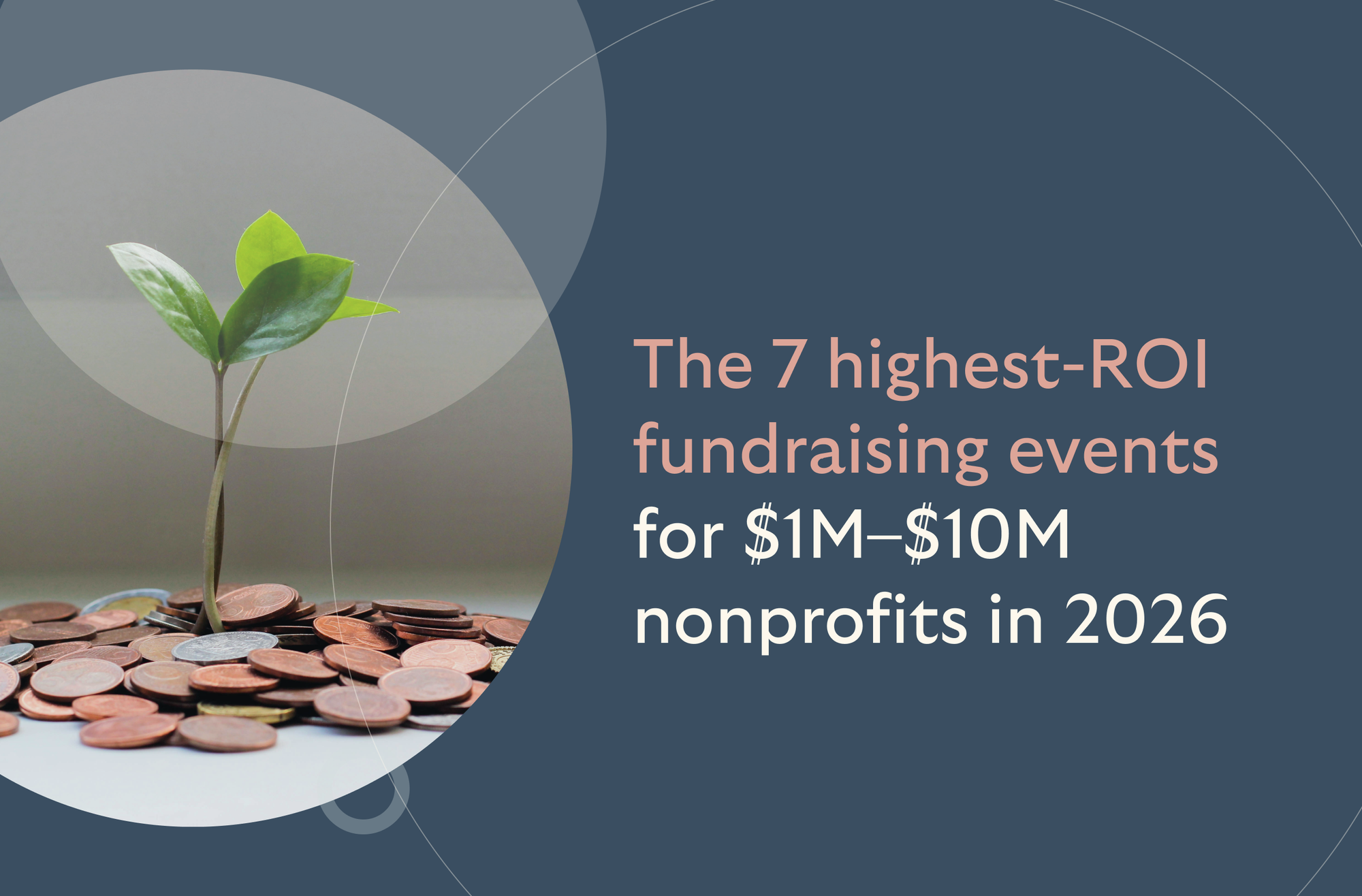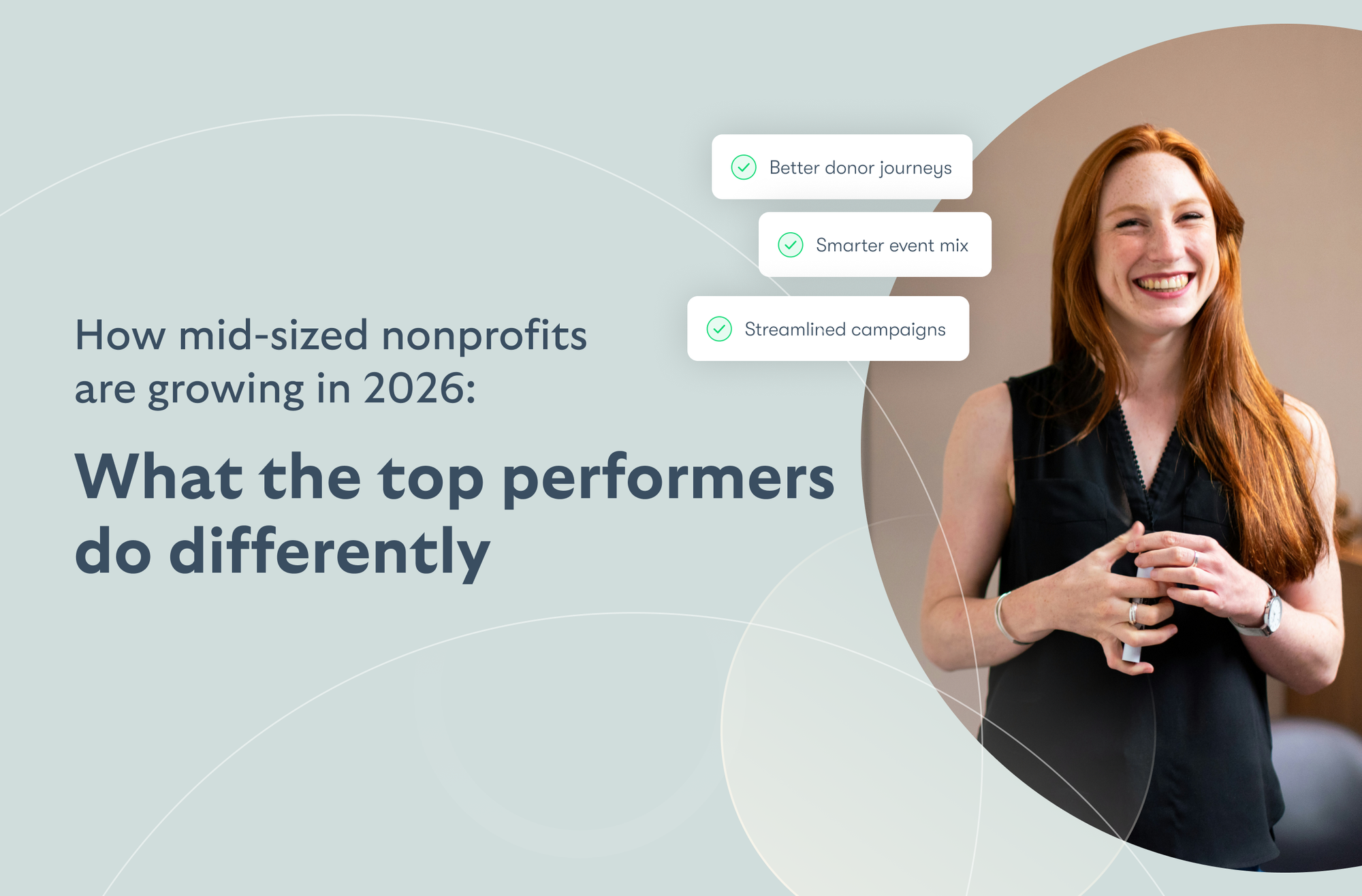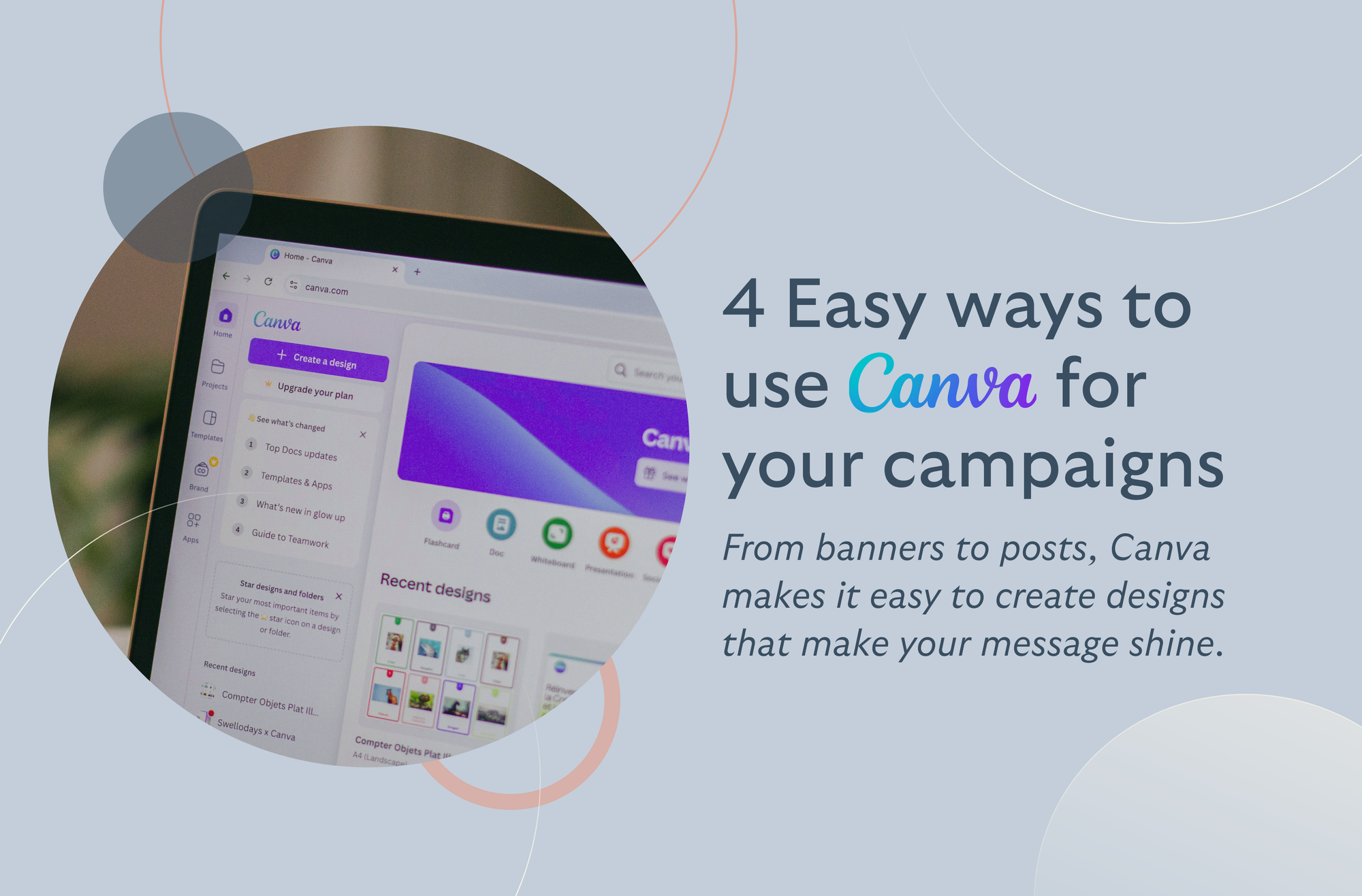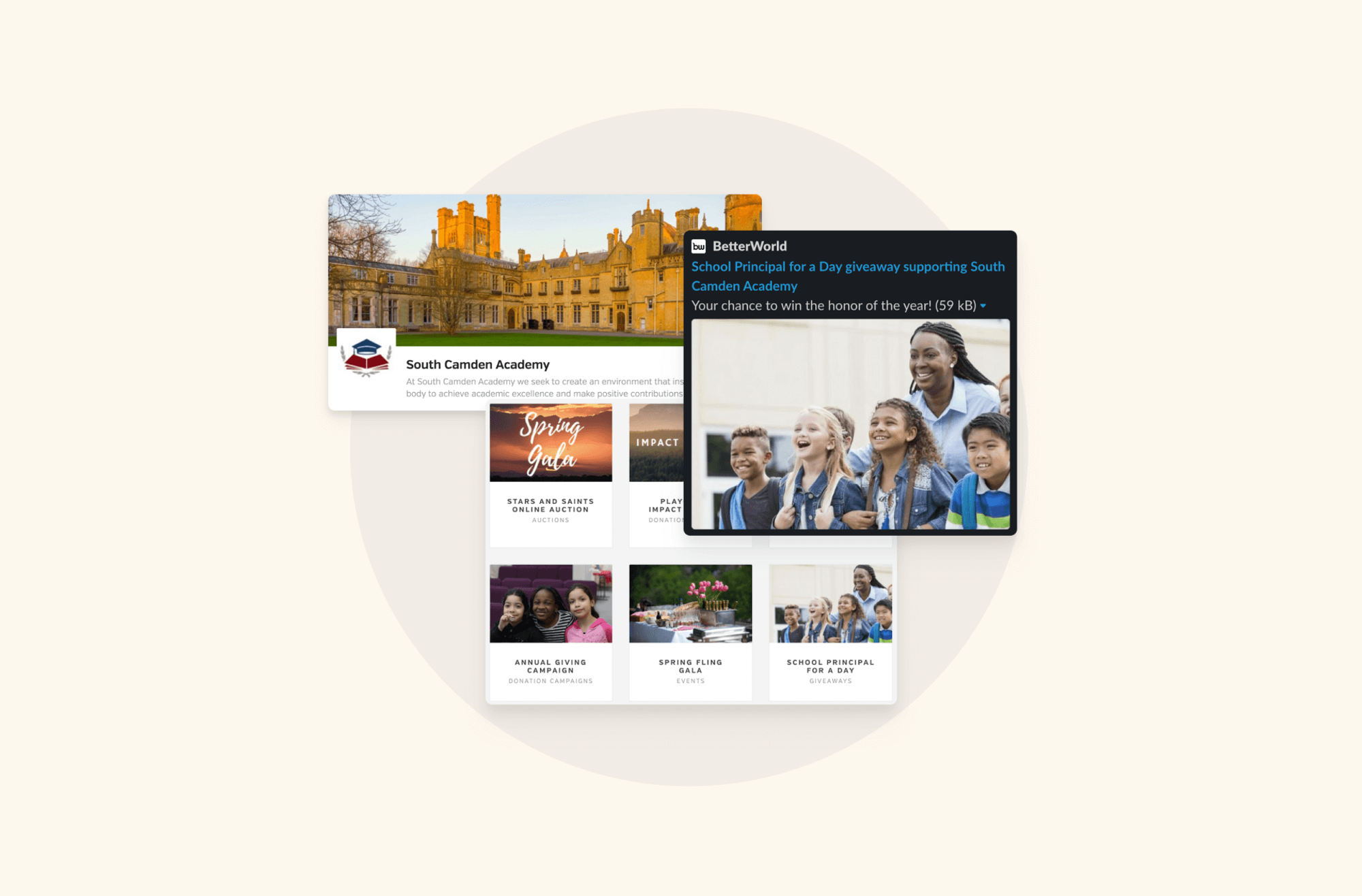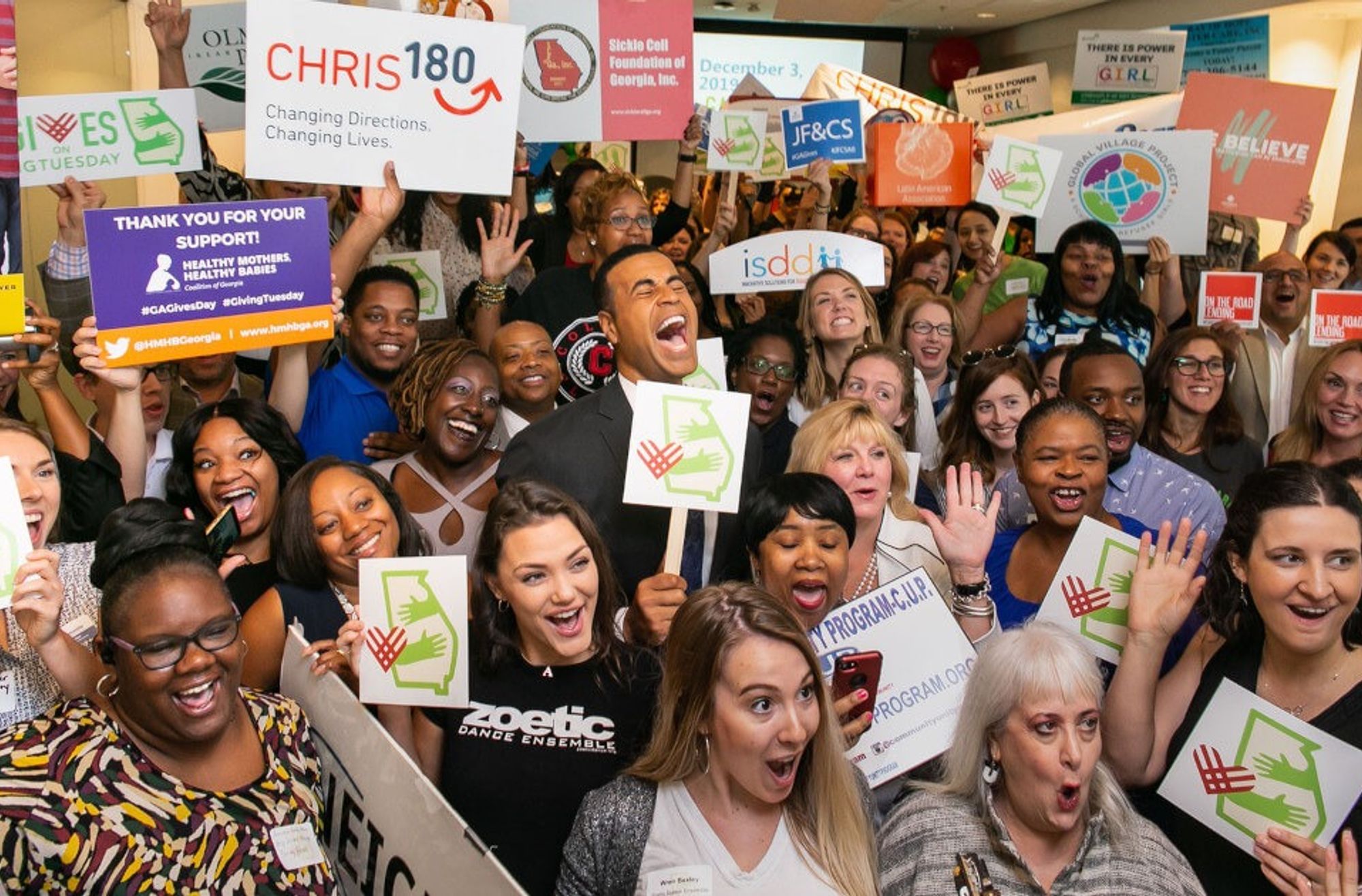Mobile Check-In — easily track and check in donors into any event from any device
Keep your bidders coming back with optional outbid notifications via text
Raise additional funds for your event by displaying sponsors on your online pages
Downloadable table cards with short-links & QR codes to make it easy to bid
Planning a Charity Event? Use This Essential Checklist for Success
By Colin Hunter
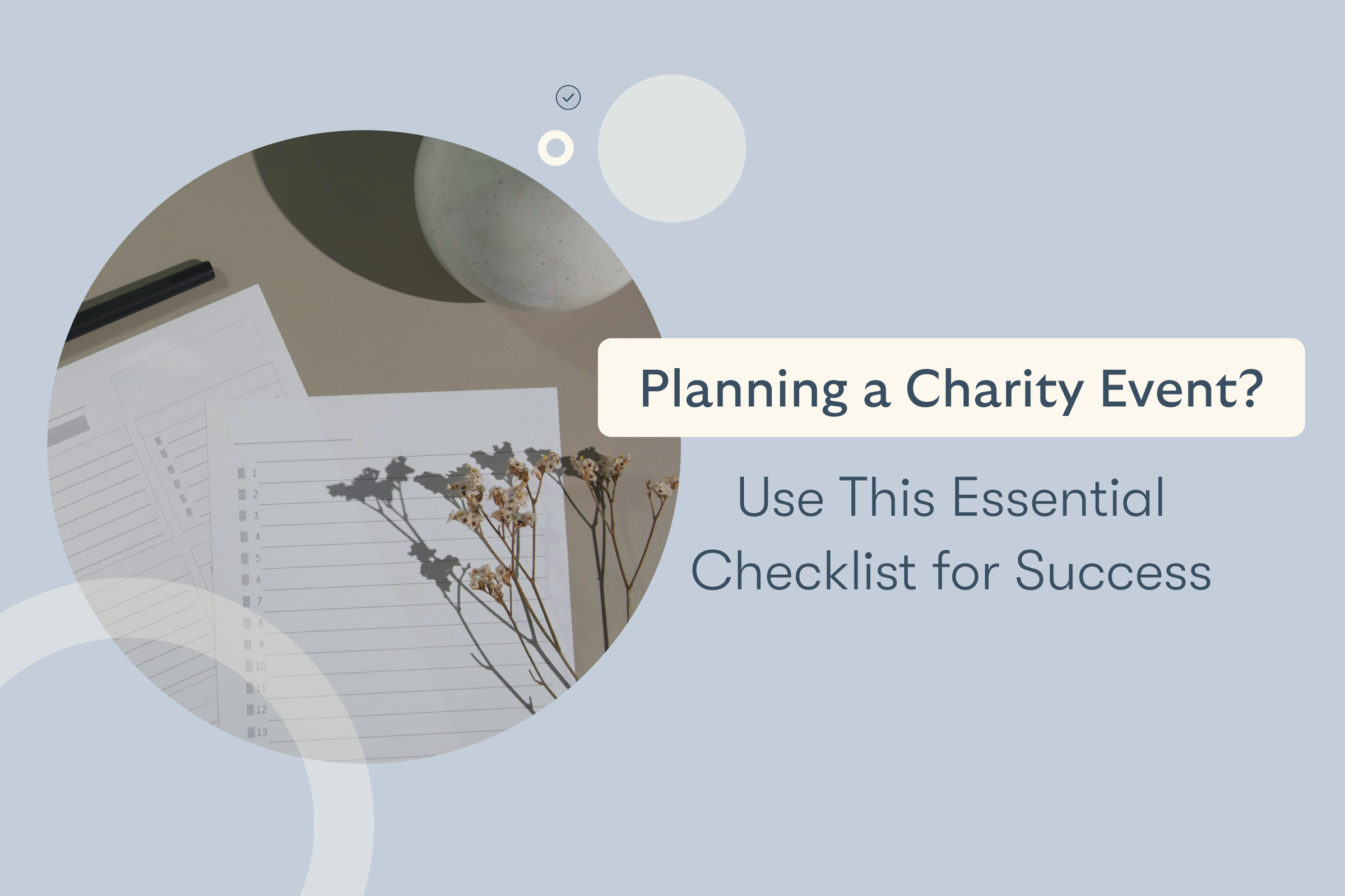
You've probably seen lots of charity events. Some stand out, and others fade into the background. But here's the thing: successful charity event planning isn't just about checking boxes. It's about knowing what matters to the people attending.
It’s easy to get distracted by decorations or catering, but the heart of your event is creating a memorable experience for your supporters.
In this checklist, you'll discover practical, down-to-earth steps that help you stay focused on what's important so your event connects, inspires, and excites people to support your cause.
Step 1: Define Your Event’s Purpose and Goals
Before you pick a venue or start promoting anything, take a moment to figure out why you're planning this event in the first place.
Ask yourself: What are you hoping to achieve? What do you want people to walk away knowing or feeling? Start by taking a close look at the reason behind your event.
Clarify your charity’s cause. For example, are you raising awareness about food insecurity in your city or helping fund school supplies for kids in under-resourced neighborhoods? Your reason shapes everything else, from whom you invite to how you raise money.
Next, set clear fundraising objectives. Maybe you want to raise $5,000 to buy winter coats for families, or you need $10,000 to support a local animal shelter for three months. Putting a number on your goal gives your team and supporters something to work toward.
Now, think about the people you want to reach. Know your audience and explain why your event matters.
If your guests are mostly parents, a family-friendly day with activities for kids might be a good fit. A breakfast or lunch with networking time might make more sense if they're local business folks. Knowing who you’re speaking to helps your message hit home.
Step 2: Establish a Realistic Budget
Once your goals are clear, it’s time to talk money. No matter the size of your event, setting a budget helps keep things on track and cuts down on stress later.
Start by listing out every cost you can think of. Even small stuff adds up. Here are some examples to include:
- Renting a space or paying for a virtual platform
- Catering or snacks
- Tables, chairs, and decorations
- Flyers, signs, or other print materials
- Entertainment or guest speaker fees
- Tech support or equipment rental
- Permits or insurance
- Thank-you gifts for volunteers
It’s also smart to leave a little wiggle room. Plan for unexpected costs. If something changes close to the event, you might need extra chairs, a backup microphone, or last-minute printing.
A solid budget helps in more ways than one. It guides your choices, keeps spending in check, and makes the rest of your charity event planning easier. If you’re working on your nonprofit fundraising plan, your event budget should fit right into it without surprises.
Step 3: Build Your Planning Team
You don’t have to plan your event alone. Build a team to make the process smoother and less stressful. The key is to pick the right people and give everyone a clear job.
Start by defining roles for each person. Here are a few examples:
- Event coordinator – keeps the timeline in check and makes sure everything stays on track
- Marketing lead – handles flyers, emails, and social media
- Sponsorship contact – reaches out to local businesses for support
- Volunteer manager – organizes helpers for the day of the event
- Budget manager – tracks spending and helps stick to the budget
If you're hosting virtual charity events, you may also need someone to handle the tech side, like managing live streams or online ticketing.
When building your team, look for people who follow through on tasks and stay organized. They don’t need to be professionals, but they should be dependable. Ask friends, board members, or volunteers who have helped in the past.
Regular team meetings help everyone stay updated. It also gives people a chance to ask questions and share ideas.
Step 4: Pick the Right Venue
Your event space can significantly impact how everything unfolds. It affects how many people show up, how comfortable they feel, and how well your team can set things up.
Start by checking a few basics. Make sure the place can hold the number of people you expect.
It should also be easy for everyone to get in and move around, especially if you have guests with mobility needs. Look for things like ramps, elevators, and clean restrooms. Don’t forget to ask about tables, chairs, sound systems, and kitchen access if you need it.
Some quick tips to help you pick a good fit:
- Go with a banquet hall or community center for a formal dinner or auction.
- A school gym or local park might be just right for smaller events.
- If you’re doing something online, make sure your space has strong internet and a quiet setup.
- Check the venue’s rules about outside food, music, and time limits.
- Think about parking or how close it is to bus stops.
The venue can really affect turnout. If it's far out or hard to park, people may not come. A busy spot in town could bring in walk-ins or extra interest.
Good charity event planning includes finding a space that works for both your budget and your guests.
Step 5: Select Your Date and Time Carefully
Choosing the right date and time can impact how many people attend, how much they donate, and how smoothly things run.
Start by avoiding dates that might cause a conflict. Holidays and big events can pull attention away from your fundraiser. For example:
- Avoid weekends like Thanksgiving or Memorial Day—many people travel.
- Skip major sports days like the Super Bowl or big local games.
- Watch out for school events, graduations, or local fairs that overlap with your audience.
Saturday is the most popular day for fundraising events, especially in the evening. People are usually free from work and more willing to attend. For daytime events like walks or family-friendly festivals, Saturday mornings or early afternoons work well.
The time of year matters, too. The end of the calendar year—November and December—is a key time for giving. Many people make donations before the end of the year to receive tax deductions.
If your nonprofit fundraising plan includes a year-end goal, holding your event during this time can help meet it.
For virtual charity events, the timing should match your audience’s daily routine. If most guests are local, weekday evenings or weekend afternoons are usually the best times. If your attendees live in different time zones, try to find a time that works for everyone or offer a replay link.
Taking time to think through the date and time gives your event a better shot at success. More people will be able to attend, and your efforts will go further.
Read about 20 Famous Fundraising Events Around The World.
Step 6: Set Up Online Registration and Donations
Why do all the hard work when BetterWorld can make things easier for you? With BetterWorld, you can set up online registration for free and keep everything organized in one place.
Planning virtual charity events or in-person gatherings? BetterWorld has tools for both. You can offer mobile check-in, group tickets, live streaming, sponsorship options, table assignments, and even text message updates. It keeps your guests in the loop and your team stress-free.
BetterWorld’s platform is completely free. You get to keep every dollar you raise—there are no hidden fees, ever. That’s a big help, especially if you’re working with a tight nonprofit fundraising plan.
If you're just looking to sell tickets, our Event Ticketing Software can handle that too. On average, it saves you 30 to 40 hours per campaign. That’s time you can spend connecting with donors or planning your next big idea.
Sign up today and run your event without spending a dime. Let BetterWorld handle the tools so you can focus on what matters.
Step 7: Plan Engaging Activities and Entertainment
The right activities and entertainment can make your event more enjoyable and help you raise more money. People are more likely to donate, stay longer, and come back next time if they’re having a good time.
Start with activities that your guests will want to participate in. A silent auction is a good pick for a wide range of events. You can auction off local art, gift baskets, or restaurant vouchers.
Raffles are another easy option—just offer a few fun prizes like gift cards, sports tickets, or small electronics. Guest speakers can also be a nice touch, especially if they have a connection to your cause. For example, a local teacher can talk about how your group helped provide classroom supplies.
Consider your audience when choosing entertainment. If families are your main guests, consider face painting, balloon artists, or kid-friendly music.
For adult audiences, try live music, a local comedian, or a short film that ties in with your mission.
The length of your event matters, too. Community events like school fundraisers or awareness walks usually work best if they last 1 to 2 hours. If it’s a casual setup like a craft fair or a local market, you can go longer—up to 3 to 6 hours. This gives people time to stop by when it works for them.
Try our Modern Fundraising Tools for Free. Get all the fundraising solutions in one place!
In-person events and galas made easy!
Step 8: Secure Sponsorships and Partnerships
Sponsorships can help cover your event costs and give your cause a bigger reach. Getting the right sponsors takes a little effort, but it’s worth it.
Start by making a list of local businesses or community groups that would be a good fit for your event. Think about places that already support local causes or have a connection to your mission.
Then, reach out with a short message explaining your event, who will be attending, and how they can get involved.
Make sure to show how the partnership benefits them as well. For example, you can feature their logo on your event signs, a shout-out during the event, or a spot on your website.
For virtual charity events, offering a quick mention during the livestream or featuring them on the donation page works well.
Sponsorships don’t just support your work—they can also save you money. A local restaurant might donate food, or a print shop might cover your flyers. This helps you lower your budget, which is a smart move in any nonprofit fundraising plan.
Less money spent means more funds can go to your cause.
Not sure how to do it? Read our guide on How To Get Sponsorships.
Step 9: Recruit and Train Volunteers
Volunteers are a big part of making any charity event run smoothly. From setup to cleanup, they help everything stay on track without putting too much pressure on your main team.
Start by thinking about the roles you’ll need to fill. Some common ones include:
- Set up team – gets the space ready before guests arrive
- Greeters – welcome people at the door and give out programs or name tags
- Tech support – handles sound, projectors, or livestreams for virtual charity events
- Cleanup crew – makes sure everything is packed up and the space is left clean
Keep training simple. One short meeting or a quick video can cover what they need to know. Just explain their tasks, where to go, and who to talk to if they need help.
When volunteers know what to do, the whole event feels more organized. Guests won’t be left wondering where to go or what’s happening next, which is a big help if you’re following a nonprofit fundraising plan.
Try to reach people in the 35 to 54 age group—they’re the most likely to volunteer, according to the Bureau of Labor Statistics. Also, women tend to volunteer more than men, so reaching out to local moms' groups or women’s clubs could be a good move.
And here’s something interesting—people who volunteer are nearly twice as likely to donate (Source). So, by getting them involved, you’re helping both your team and your fundraising goals.
Step 10: Effective Promotion and Marketing
Once your event is planned, it’s time to let people know about it. A good mix of online and offline promotion can help you reach more people and boost attendance.
Start with digital marketing. Social media, email marketing, SEO, and video posts are some of the highest return-on-investment tools out there.
These channels help you reach people where they already spend their time. If you’re planning virtual charity events, video and email work especially well since everything happens online.
You can also explore influencer or podcast marketing if you have connections in those areas.
For offline promotion, don’t skip the basics—flyers at local businesses, posters in community centers, school newsletters, or word of mouth through board members and volunteers. Printed invites and banners at the venue can also add a nice touch.
You might want to start promotions even earlier, but a good starting point is 3 months from your event. From there, here’s a simple timeline you can follow:
- 3 months before: Share your event date, time, location, and registration link
- 2 to 4 weeks before: Post reminders, send out emails, and highlight activities like auctions or speakers
- 1 week before: Share a final reminder and let guests know what to expect
- Day of the event: Post real-time updates, behind-the-scenes photos, or livestreams to keep people engaged
To create good content, keep things short and simple. Use real photos, short videos, or quick quotes from people connected to your cause. Make your posts feel personal and easy to understand.
Clear promotion helps all your charity event planning pay off. It gets people in the door, keeps them involved, and supports your fundraising goals.
Step 11: Event-Day Logistics
Event day can feel a little busy, but with the right plan, you don’t have to stress. Think of it like a checklist you go through one step at a time.
Start with the basics. Your setup should be done before guests arrive. That means tables, chairs, signs, tech equipment, and anything else you need should already be in place.
For registration, have someone ready to welcome guests, check them in, and hand out name tags or programs. If you're using digital check-in, make sure your devices are charged and working.
Don’t forget the safety side of things. Know where the exits, restrooms, and first aid kits are. It’s also a good idea to have someone on your team ready to handle any small emergencies, just in case.
Sometimes, things pop up last minute—like a speaker stuck in traffic or a mic that won’t work. Stay calm and move to plan B. Bring extras like batteries, printouts, or a backup laptop. If you're doing virtual charity events, have someone watching the chat and another person ready to fix any tech issues.
Whether you're following a charity event planning guide or working from your own notes, having a steady plan for the day helps you focus on the guests instead of the problems.
Step 12: Follow-Up and Thank Your Supporters
After the event ends, your work isn’t over just yet. Saying thank you—soon and authentically—goes a long way in building trust with your supporters.
Send a thank-you email or note within a few days. Mention the name of the event and say what their help meant, whether they donated, volunteered, or just showed up. You don’t need to write something long. Keep it personal and specific.
Once that’s done, share how the event went. Let people know how much was raised, how many guests came, and what the funds will be used for. This kind of follow-up shows your supporters that their time and money made a difference. It also keeps them interested in what you’re doing next.
Here’s something to think about: 70% of donors say they’d give more if charities did a better job of showing gratitude and sharing results. And 93% would give again to the same group for the same reason.
That’s a big deal, especially if your nonprofit fundraising plan focuses on long-term support.
Things to Avoid While Planning a Charity Event
Here are some common mistakes you’ll want to steer clear of during your charity event planning process. Avoiding these can help your event run more smoothly and save you from unexpected problems later on.
- Not checking with your local council for permits or event rules
- Skipping insurance coverage for your venue, guests, or equipment
- Forgetting to create a backup plan for rain or cancellations
- Overbooking your schedule with too many activities in a short time
- Choosing a location that’s hard to find or lacks enough parking
- Relying on just one person for multiple important tasks
- Ignoring accessibility needs for guests with disabilities
- Not testing your equipment or internet before virtual charity events
- Failing to communicate clear arrival and setup times with your team
- Assuming guests know where to go without help from volunteers
- Not collecting contact info for follow-up and future outreach
- Overlooking food allergies or dietary needs in your catering
- Forgetting to thank vendors or community partners after the event
- Skipping a post-event review to learn what worked and what didn’t
- Not tying your event goals into your overall nonprofit fundraising plan
These simple checks can help you stay prepared and avoid last-minute surprises.
Put Your Checklist to Work
Now that you’ve got a step-by-step plan, it’s time to put it into action. Stay focused, take it one task at a time, and don’t worry if things don’t go perfectly.
What matters most is staying organized and keeping your goals in sight. Your effort can make a real difference.
If your group is new to charity event planning, lean on your team and keep learning with each event. The more you do, the stronger your nonprofit fundraising plan will become.
FAQs on Charity Event Planning
1. Do I need a special permit to host a charity event?
It depends on your location and event type. Check with your city or county about permits for food, music, raffles, or street use.
2. Can I accept donations through online platforms?
Yes, BetterWorld lets you accept online donations through Easy-to-Use Donation Forms. You get tons of features with zero cost.
3. How do I collect guest information for future events?
Use online registration forms that ask for a name, email, and consent to receive updates. This helps with future outreach.
4. What's the best way to handle cash donations at an event?
Have a locked box and a trusted volunteer manage it. Count and record all cash with a second person for accuracy and transparency.
5. How do I deal with low ticket sales before the event?
Send reminder emails, post on social media with updates, and ask your team to help spread the word. You can also offer group ticket discounts.
6. What kind of insurance might I need for my event?
You may need event liability insurance, especially if you're renting a space. Some venues require proof of coverage.
7. Can I include games or contests with prizes at my event?
Yes, but check your local rules first—some areas have laws about raffles or prize drawings, even for nonprofits.

Join 105,000+ amazing nonprofits, organizations, and fundraisers on BetterWorld

Let our FREE fundraising tools help you raise more funds with less effort


